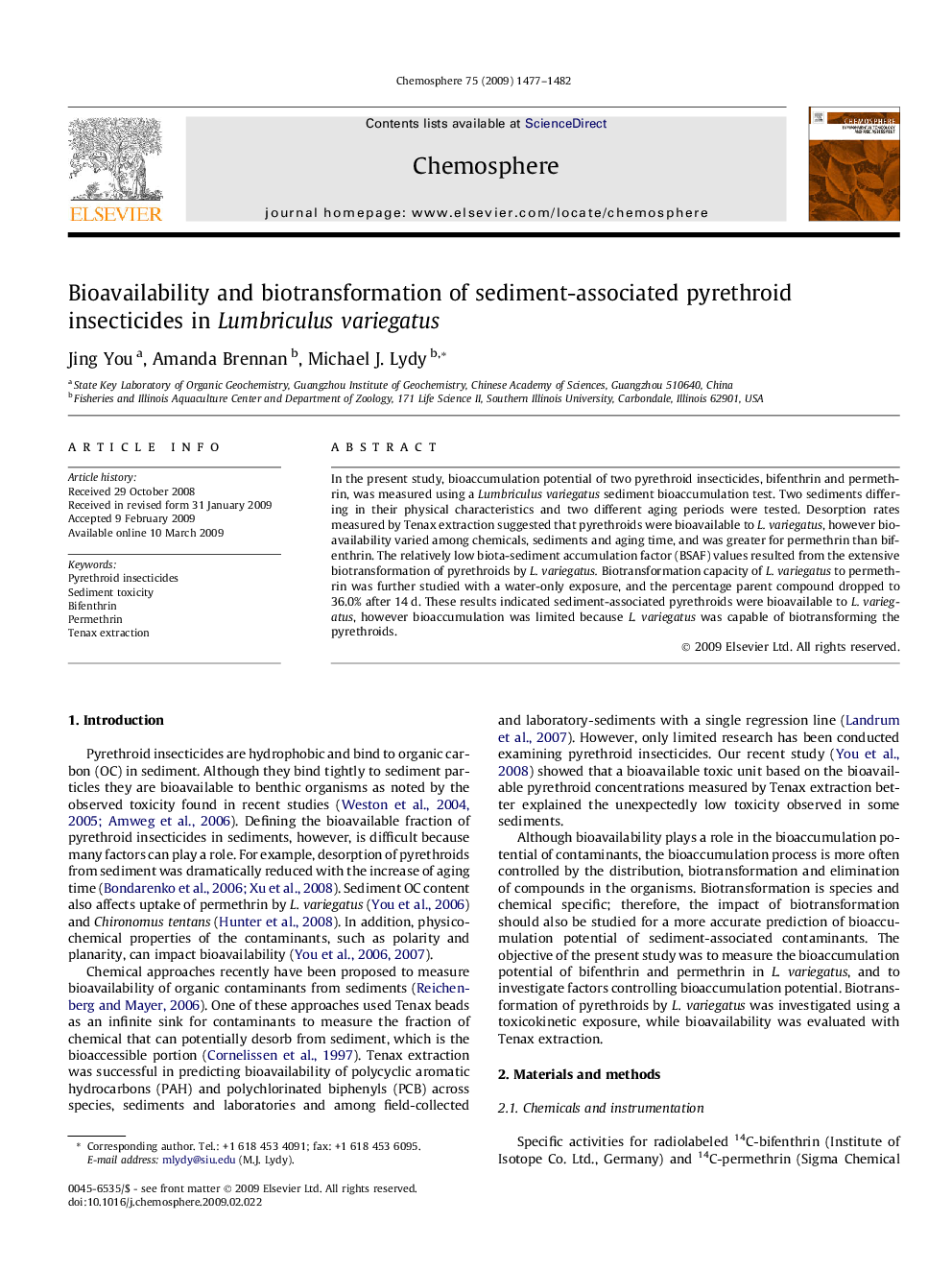| Article ID | Journal | Published Year | Pages | File Type |
|---|---|---|---|---|
| 4412949 | Chemosphere | 2009 | 6 Pages |
In the present study, bioaccumulation potential of two pyrethroid insecticides, bifenthrin and permethrin, was measured using a Lumbriculus variegatus sediment bioaccumulation test. Two sediments differing in their physical characteristics and two different aging periods were tested. Desorption rates measured by Tenax extraction suggested that pyrethroids were bioavailable to L. variegatus, however bioavailability varied among chemicals, sediments and aging time, and was greater for permethrin than bifenthrin. The relatively low biota-sediment accumulation factor (BSAF) values resulted from the extensive biotransformation of pyrethroids by L. variegatus. Biotransformation capacity of L. variegatus to permethrin was further studied with a water-only exposure, and the percentage parent compound dropped to 36.0% after 14 d. These results indicated sediment-associated pyrethroids were bioavailable to L. variegatus, however bioaccumulation was limited because L. variegatus was capable of biotransforming the pyrethroids.
